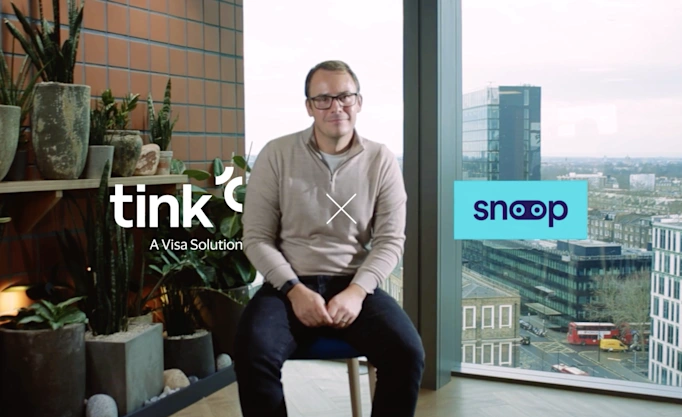Why invoices are the perfect use case for open banking payments

What makes open banking such a good match for invoice settlement, and how can this product-market fit help lead to mass adoption? Let’s look at the use case of invoice settlement and what it might mean for the future of open banking payments such as PIS.
Payment initiation services (PIS) and invoice settlement use cases are the perfect fit as they unlock faster, simpler ways to pay invoices from any bank account.
This is a major upgrade compared to traditional ways of paying an invoice, like having to manually enter your bank details.
Invoice settlement as a use case is proving that mass adoption of open banking payments is already being achieved.
When a new product or service is introduced to an industry, finding the right product-market fit is essential for it to gain traction. If the product doesn’t fulfil the needs of a particular market or solve a pressing pain point, it will struggle to gain mass adoption.
Since the early days of open banking there’s always been a clear and strong product-market fit between payment initiation services, or PIS, and invoice settlement use cases. Payment initiation unlocks a faster, simpler way to pay an invoice from any bank account. This is a major upgrade relative to traditional ways of paying an invoice, like having to manually enter your bank details.
While the term invoice settlement might bring to mind the idea of paperwork sent by a contractor, it’s often used to refer to any post-purchase payment – meaning any payment made after the goods or services have been sold. This can include anything from bill payments to one-click payments and buy now pay later services. In fact, payment initiation has already made strong inroads across each of these use cases.
Turning limitations into opportunities
What were previously seen as potential ‘limitations’ of PIS are actually what make it perfectly suited for invoice settlement. For instance, with PIS there’s no guarantee that the payment confirmation will be received instantaneously, which could cause fraud or order fulfilment issues in an ecommerce context.
However, invoices do not require an immediate confirmation of payment. It’s not vital that the money is received as quickly as possible – it’s more important that the user can complete the payment process as quickly as possible. And this is where PIS excels: open banking payment flows are digital-first and can be fully-embedded in any app or service, meaning faster payment flows without any clunky redirects.
The characteristics of invoices as a payment method also make it a good fit for PIS. Consumers typically expect to settle invoices via bank transfer, which would mean switching between interfaces (your bank and the received invoice) to copy across invoice and account numbers to make a payment. Switching between interfaces is inconvenient and disrupts the user experience, but PIS resolves that friction point by allowing bank transfers to be initiated directly from the invoice provider’s interface.
The key benefit of PIS is that it streamlines the payment process, making it faster and easier. An easy payment process benefits companies and invoice providers, as it improves the chances of getting an invoice paid on time. Payment initiation also increases consumer satisfaction: a convenient payment process means people will stop seeing invoice settlement as an inconvenient administrative task. Meanwhile, PIS can also match traditional invoice solutions on cost – open banking payments incur lower fees compared to other digital payment methods like cards or wallets.
Although updates and improvements are constantly being made, PIS was not created or designed as a perfect match for invoice settlement. It’s more so that invoice settlement was the perfect use case to see PIS gain traction. While other payment methods have additional features, there’s no real need for them – why use a more complicated (and expensive) tool when a simple one like PIS does the job?
Digitisation
It’s important to note that using PIS for invoice settlement also turns the process into a digital one. While the benefits of digitisation are generic to a lot of manual processes that can be automated, digitisation is significant for invoice settlement because of how widespread manual invoicing is.
Many companies, even large established ones, use little automation and a lot of physical paperwork for invoicing. PIS eliminates paperwork and allows data to be more easily collected for analysis. The potential for analysis is a considerable benefit of digitisation: it’s almost impossible for businesses to get actionable data insights with a paper system.
Like most digital solutions, PIS also reduces cost – a crucial factor for invoice providers that are only hosting or sending an invoice instead of being the source of the invoice.
The key to mass adoption
Consumers will gravitate to the fastest, simplest, and most appropriate method of completing an available task. Quick and hassle-free is PIS in a nutshell. It will only gain mass adoption by fulfilling an evident and specific consumer need, and invoice settlement is that need.
Invoice settlement as a use case proves that the mass adoption of open banking payments is possible if the product-market fit is right. The tricky part is exceeding consumer expectations. Developers must ensure PIS is simple, quick to use, and has the potential to scale.
Our experience shows it can be done: by optimising for mass usage and working closely with Tink customer Kivra, we succeeded in scaling PIS to over 4 million users.
The future
Tink’s Payment Initiation now enables millions of payments every month, proving that there’s a clear product-market with invoice settlement. And we’re making constant improvements to the service too: one recent development is the ability to schedule payments via PIS.
The goal now is to prove product-market fit across many more use cases. For instance, we’re already seeing similar traction in account top-up use cases, where a user adds funds to a wallet or pre-paid card.
The success of the invoice settlement use case shows that it can pay off when businesses invest in new, better ways to pay. It also points towards a possible path to mass adoption for open banking payments. Tink has seen firsthand how open banking can excel at scale for invoice payments. The only question is which use case will be next.
Discover more open banking insights from Tink
Tink is at the forefront of open banking, offering a platform that prioritises transparency and ease of use. Click here to read more about how Tink is transforming the payments’ landscape.
More in Use cases

2025-06-18
2 min read
Video – How Snoop is unlocking smarter saving with variable recurring payments
With the launch of variable recurring payments (VRP), Snoop is introducing a smarter, more flexible way for people to build their savings – and making the most of Tink's open banking solutions in the process.
Read more

2024-12-17
7 min read
User experience: Wealthify empowers customers’ financial wellness with Pay by Bank
Tink partner Wealthify uses Pay by Bank for the optimal PFM, investment and saving experience, thanks to easy account top ups and secure account-to-account payments.
Read more

2024-08-12
11 min read
Six ways open banking helps remittance
Learn all about remittance, and how open banking can help it happen more smoothly with six of our best tips. From reducing friction, to simplifying compliance processes, and much more.
Read more
Get started with Tink
Contact our team to learn more about what we can help you build – or create an account to get started right away.
